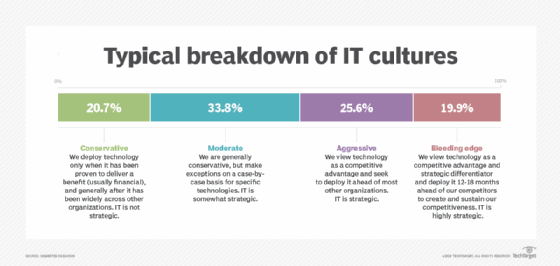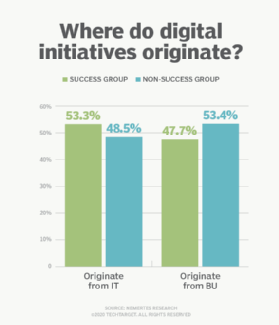
Aleksandr Bedrin - Fotolia
How companies can overcome the IT worker shortage
Research shows organizations are still struggling to bring in IT talent. We identify the reasons why there's a shortage and what CIOs and other IT leaders can do to combat it.
"Water, water, every where, nor any drop to drink." This line from Samuel Taylor Coleridge's The Rime of the Ancient Mariner could just as easily apply to CIOs seeking to fill crucial spots in their IT organizations. The world may seem full of systems engineers, network specialists and IT generalists, but when it comes to critical roles like cloud architects, cybersecurity specialists or agile developers, there's hardly "any drop to drink."
What exactly are the causes and, more importantly, what can CIOs do to address this IT talent shortage?
According to the National Science Foundation, the number of computer science degrees peaked in 2004 and did not begin to recover until 2015. There are several explanations for this, but the most likely one is that the computer science job market collapsed during the dot-com bust, leading students to select other fields. We're now missing an entire generation of computer science graduates who would be in senior-level technical roles.
The emergence of new technologies and paradigms is another factor contributing to the IT talent shortage. Cybersecurity, cloud and agile development are three areas with critical skills shortages, and they have all seen tremendous evolution in the past five years. Schools have only just begun producing specialists in these areas, and even as certification and training programs are emerging, long-time practitioners with other specialties still require a few years to make the shift.
Lastly, the attractiveness of IT as a career has declined. Salaries in different areas have stayed flat, even as responsibilities have increased. Moreover, until recently, the excitement had gone out of the field. Since the dot-com bust, most IT departments had the mandate of lowering costs -- investing in technology for business enablement would occasionally show up as a goal for a quarter or two, but in general, IT was pushed to reduce costs. Even when the digital transformation revolution arrived in 2012, IT was shut out. Most companies that invested in digital transformation didn't ask their IT teams to step up to the role. Instead, they brought in outsiders to run the high prestige, highly paid projects.
Addressing the need for new tech workers
How can CIOs address these problems? The most critical way is to create a culture in which technology and technology practitioners are valued by the organization. Nemertes Research typically asks survey participants to characterize their business's view toward technology with four options: conservative, moderate, aggressive and leading edge/bleeding edge (see Figure 1). Conservative and moderate cultures typically view IT as a cost saver, while aggressive and leading-edge/bleeding edge cultures see it as a differentiator and business enabler. The latter viewpoint is a more gratifying environment for IT teams.

Beyond that, there are three practical steps that can nurture IT talent.
Internships with promising high school and college students. Organizations hoping to lock-in the best and the brightest tend to start early. Recruit promising students in high school and college and offer them paid internships on interesting projects. These candidates are more likely to join the firm when they graduate.

Compensation and support for completing technical specializations. In many areas like cloud architecture, vendors offer solid and effective training and certification programs. Rewarding technology practitioners both financially and in terms of career advancement will encourage practitioners to make the effort to learn more.
Invite IT to the table for critical strategic projects. Most strategic projects these days are dependent, at least partially, on technology yet IT isn't often brought to the table. Nemertes found companies launching digital transformation initiatives are more likely to have ideas initiating from IT (see Figure 2).








